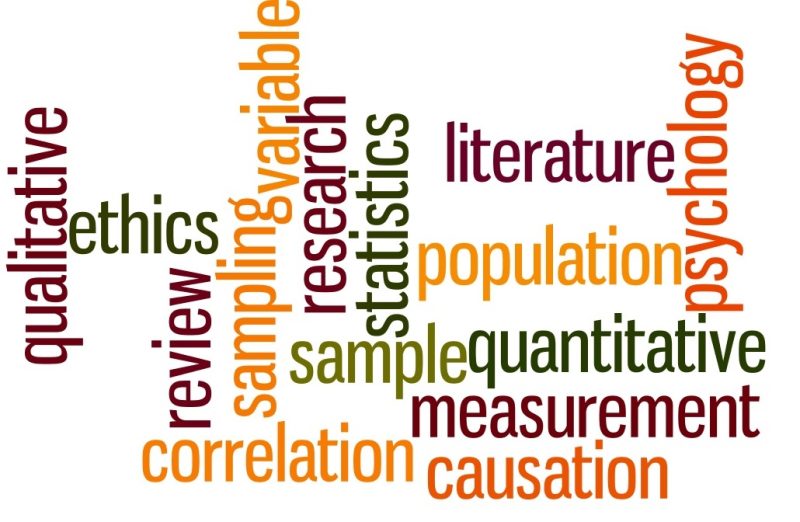Introduction
Recently, while conducting a literature review for one of my research projects, I recognized the pressing need for a systematic approach to maintain my organization. Thus, I formulated my own protocol—a set of orderly steps—to facilitate the literature review process. To prevent losing track of my methodology, I wrote down these essential points on sticky notes, a visual aid that proved immensely helpful. It then occurred to me that sharing these steps could be of great value to others engaged in similar endeavors.
In this practical guide, I present an outlined sequence of 8 steps designed to enhance the efficiency and effectiveness of your literature review. By adopting this structured approach, you can navigate the intricacies of literature review with utmost precision and thoroughness.
Note 1: This is not a guide on how to find out the gaps and do critical analysis. This is a guide on how to conduct the literature review in an organized way so that you can save time and energy.
Note 2: There are different ways of doing the literature review- by themes, by chronology of events, by addressing only the gaps, etc. Most of the time, I prefer to search by themes to find the research gaps. So, these steps are mainly suitable if you are doing a literature review by themes.
Now Let’s jump into those steps.
Step 1: Organizing the Review in a Word File
To begin, create a Word document and establish headings for the main themes of your literature review. You can find the themes in a deductive approach (Looking at your potential literatures at first before starting the review). For example, if I want to do a literature review on -insecurity events in the Rohingya camps, I will make choose these themes and subthemes or section and sub sections-
- Identity of Rohingyas
- A brief history of Rohingya
- Forced Migration and Genocide of Rohingya Population
- International Organisations Response to the Rohingya Crisis
- UN
- WHO
- UNHCR
- EU (the list goes on actually depending on your focus!)
- Addressing security concerns in Rohingya Camps
- Drug trafficking
- Human trafficking and smuggling
- Extreme groups
- Political violence
- Gender-based Violence (the list goes on too, depending on your focus!)
These headings and subheadings will serve as an outline for your review, allowing you to organize your thoughts and maintain clarity throughout the process.
Step 2: Creating Folders and Sub-Folders
To streamline your literature review process, consider creating separate folders on your computer for each main theme and sub-folders for sub-themes. This organizational structure will help you store and locate relevant articles efficiently.
Step 3: Replicate the Organization in referencing software
I use Zotero for my referencing nowadays. You can use any referencing software that you like (such as EndNote, Mendeley, etc). Create folders and sub-folders within Zotero to mirror the structure you established in your Word document. This will enable you to seamlessly integrate your reference management with the organization of your review.
Step 4: Importing Articles
Next, save articles related to each theme in the corresponding computer folders. Import these articles into Zotero using their titles, DOIs (Digital Object Identifiers), or by dragging and dropping PDF files. For webpages, utilize Zotero’s web importer, which allows you to capture snapshots and make notes directly from the webpage.
Step 5: Reading and Highlighting
With your articles imported, it’s time to delve into the content. Use Zotero to read through the articles and highlight key passages or relevant information. The left column in Zotero is an excellent place to mark important lines, helping you keep track of crucial points for later reference.
Step 6: Writing
Now that you have familiarized yourself with the literature and highlighted relevant sections, it’s time to write. Double-click on an article in Zotero to access its content and begin drafting your review. With the main points already highlighted, you can efficiently articulate your arguments and discuss the literature. Remember to include proper citations for all referenced materials.
Step 7: Sub-Themes and Sub-Folders
Extend the same process outlined in Step 6 to sub-themes and sub-folders. Read the relevant articles, highlight important sections, and incorporate them into your review, maintaining a clear structure and flow throughout.
Step 8: Repeat for Other Themes
Once you have completed the literature review for one theme, repeat the process for other themes in your outline. This approach ensures that all aspects of your research topic are thoroughly covered and allows for comprehensive analysis.
Conclusion:
Conducting a literature review can be a complex and time-consuming task, but by following these 8 practical steps, you can navigate the process with greater ease and efficiency. By organizing your review, importing articles, reading and highlighting, and writing systematically, you can produce a robust literature review that forms a solid foundation for your research project. Remember to stay focused, be thorough, and critically evaluate the literature to contribute meaningful insights to your field of study.


